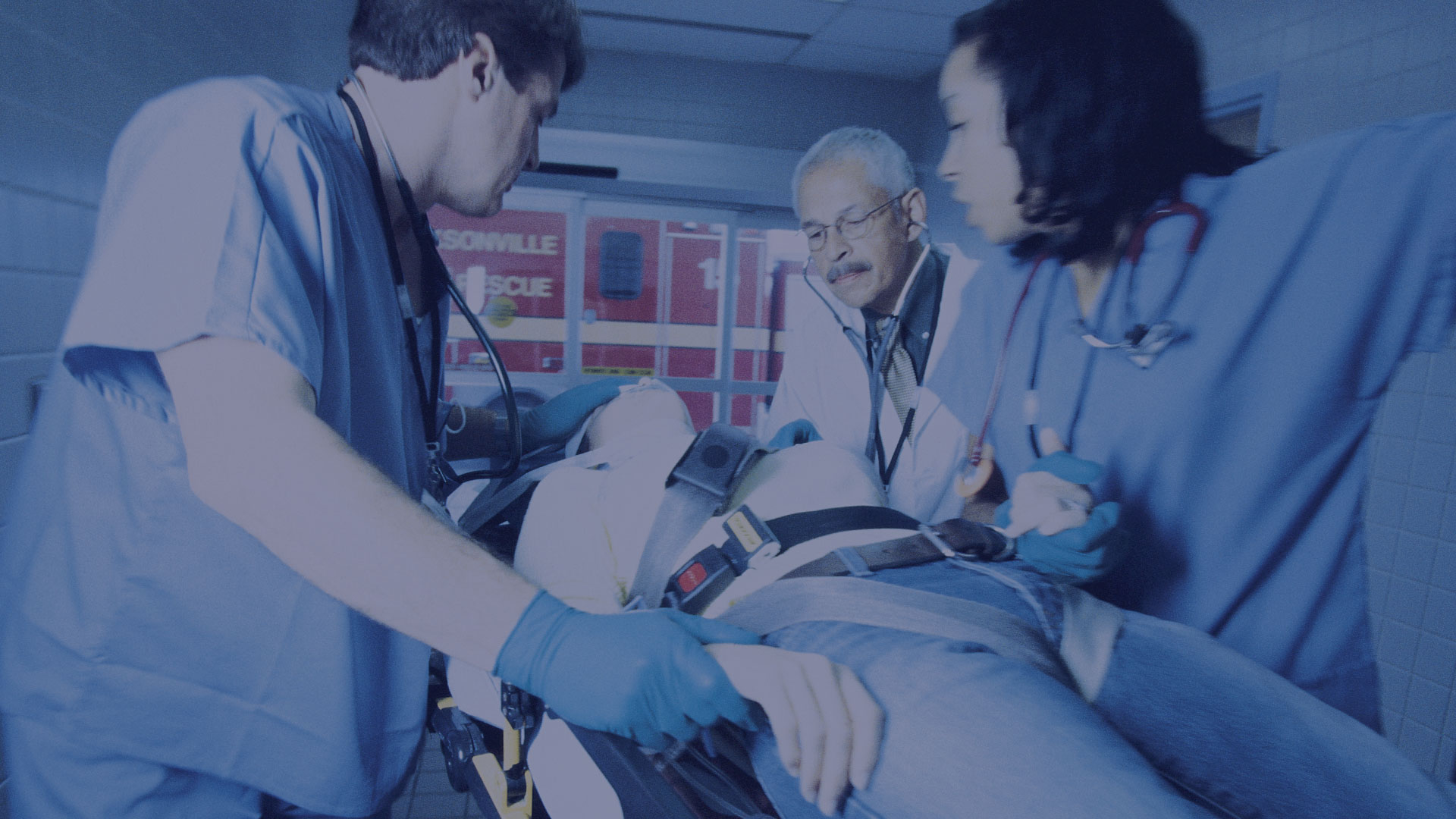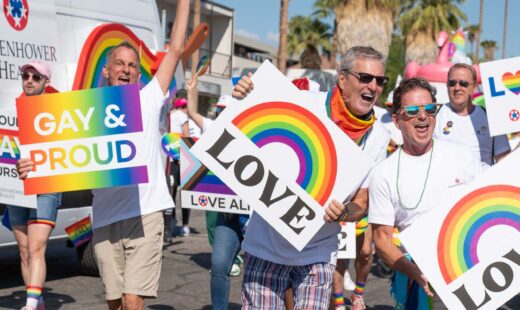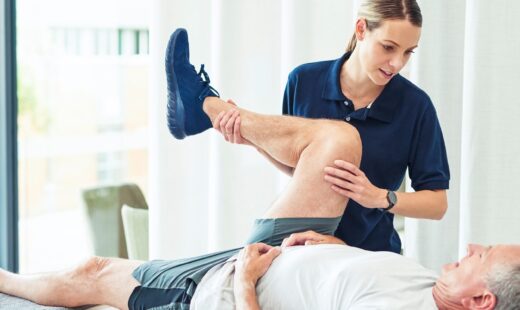This is a tale of three nurses. All three were in Las Vegas on the night of Oct. 1, 2017. One went to work at a local hospital, while the other two attended the country music festival.
One nurse would eventually return to his home after a horrific shift. One would learn from her nearby home that she had been captured in an iconic photo. And one would never go home again.
Sonny Melton, RN, from Big Sandy, Tenn., was among the first casualties to be identified in the aftermath of a killing spree at the Route 91 Harvest music festival in Las Vegas that left at least 58 people dead and 489 injured.
An emergency nurse who graduated with his bachelor’s degree in 2015, Melton and his wife, a surgeon, were celebrating their first wedding anniversary at the popular music festival, according to news reports. He died from a gunshot wound he sustained while shielding his wife from a barrage of bullets fired into the crowd of 22,000 during what would become the nation’s worst mass shooting. He was 29.
Melton wouldn’t recover from his injury at an area hospital such as University Medical Center of Southern Nevada, the state’s only Level 1 trauma center, where 104 victims of the shooting were received and where Dean Harris, RN, had begun his shift. A travel nurse from the Louisville, Kentucky area, Harris, had moved to Las Vegas just weeks before the shooting, according to ABC News affiliate WHAS11. The night of the rampage marked the first time he was assigned to the trauma unit.
Harris told WHAS11 he and his colleagues received an alert to prepare for the arrival of patients with gunshot wounds. The number of injured patients to reach the hospital would prove to be staggering.
“It was so quick,” Harris told the news station. “Everybody just came in all at once. People just started flooding off of these ambulances with shots of all different natures. Some people had to be treated outside in the ambulance bay because we had to move so quick [sic], and there just wasn’t enough room back in the emergency department. Other people were getting flown right back to the trauma and emergency rooms … eventually, we were running out of beds.”
Harris said he worked with other nurses and a physician outside the hospital to triage and treat a torrent of arriving patients, “throwing gauze and tape on people and cutting off clothes just trying to figure out where the wound was, how bad it was, and where they needed to go.”
The next day, Harris reflected on the magnitude of the event.
“I’ve never really been in that situation, so I just jumped out there to see what I could do,” he told WHAS11.
Jumping in also came naturally to Lorisa Loy, RN, an Indiana native who works as an ICU nurse at Las Vegas Sunrise Hospital. A now viral photo of Loy, who attended the festival with her daughter, depicts her risking her life to help a man in a wheelchair escape the tirade of bullets. Loy told NBC’s Fort Wayne, Ind., affiliate WTHR she also prepared tourniquets and performed CPR on victims even as bullets continued to rain on the crowd.
Loy told CBS News she was shaken by the photo, realizing after the fact how close she had been to serious injury or death. But she also shrugged off her role as a lifesaver.
“It’s all for the greater good, right?” she told the news station.
The stories of these nurses, each a hero in their own way, as well as the additional off-duty nurses, physicians, and other clinicians who rushed to treat their fellow concert-goers on scene, serve as testament to the awe-inspiring character of health care professionals who so often put the welfare of others above their own. Unfortunately, they also provide a reminder that mass-shooting events can happen at anytime, to anyone, and anywhere — even the hospital or clinic where you work.
Protective Instincts
Nurses have a duty to respond in disasters and other mass-casualty incidents, as outlined in the American Nurses Association’s Code of Ethics for Nurses With Interpretive Statements. But that same ethical code insists nurses also have an obligation to care for themselves. These competing interests can present a dilemma for nurses when they find themselves in dangerous situations, especially those who do not work in emergency response settings. In the case of an active shooter, when indecision can be perilous, they’re caught wondering whether to stay and help, or flee to protect themselves.
Why, then, do nurses like Melton and Loy so readily respond under violent conditions that could place their own lives at risk?
Perhaps the answer lies in nurses’ innate sense of compassion, but also in their protective instincts.
Melton gave his own life to safeguard his wife. It’s safe to say his courageous act reflected a protective sense common among loving partners, but in his honor it’s also fair to wonder if that same instinct to protect would have led him to do the same for others.
His father, James Warren Melton, provided a clue to his son’s nature in a wrenching open letter about Sonny’s death. The senior Melton relayed how he had once asked his son why he served as an emergency nurse.
“… he [Sonny] just smiled and in a matter-of-fact way said, ‘I want to help save people’s lives,’” James Melton wrote on Facebook.
“I think he would’ve done it for a complete stranger,” Big Sandy resident Gwen Pettigrew, who personally knew Melton, told a local TV station. “It’s just the kind of person he was.”
Providers and Peril
The evident-to-all qualities of nurses like Melton, Loy, and Harris — to safeguard, provide care and comfort, and perform with speed, expertise, and professionalism — epitomize the reason the public has named nurses the most trusted profession in America for 15 consecutive years.
But those same characteristics also raise expectations.
The Hartford Consensus, an initiative sponsored by the American College of Surgeons, created a cohesive, national policy on the medical response to shootings in the wake of the 2012 Sandy Hook Elementary School massacre in Newton, Conn. Much of the initiative’s focus has centered on educational efforts to control hemorrhage in shooting events, such as its Stop the Bleed informational campaign. More recently, the project explored the obligations of health care professionals, particularly nurses and physicians, in response to shooting incidents within hospitals. It surveyed the attitudes of both the public and health care workers on the responsibilities of hospital-based clinicians to protect patients in active shooter events.
The results, reported in a study released in August, revealed patients expect health care practitioners in hospitals to protect them in active shooting incidents, even if shielding patients puts those clinicians at grave risk.
Health care professionals and members of the public who responded to the survey agreed nurses and physicians hold a special duty to protect patients under their care in an active shooter situation (62% and 61%, respectively). A majority of the public (79%) also held the strong belief that nurses and doctors should put themselves at personal risk to help patients during a shooting incident.
For their part, nurses and physicians were not quite as generous when it came to their personal safety. Only 63% of responding clinicians agreed with patients’ expectation that nurses and physicians should risk personal harm in safeguarding those under their care against active shooters. Likewise, while 40% of the public indicated nurses and doctors should be required to save lives during an active shooting, only 15% of clinicians strongly agreed with such a mandate.
Yet the survey data also show a majority of the public (76%) recognize any decision by nurses and physicians to put their own lives in jeopardy during an active shooting event should be a personal choice. Ninety-two percent of nurses and physicians agreed.
Risk for Hospitals
Clinicians think they just might have to make that choice. The Hartford Consensus survey also showed that 33% of responding nurses and physicians ranked the risk of an active shooting event in a hospital setting as high or very high.
Most health care professionals, as reflected in the survey, understand an element of personal safety risk to be part of their jobs. They also appear to accept that their own vulnerability rises with higher levels of vulnerability in the patients under their care.
Forty-five percent of nurses and doctors in the survey, for example, thought practitioners in the OR, where abandonment of patients would clearly place those patients’ lives in jeopardy, should assume a higher level of personal risk to protect patients in an active shooter situation; 36% of ICU clinicians felt the same way about their practice setting. In ambulatory care areas, 22% of health professionals felt caregivers should assume a high level of personal risk to shield patients.
What Would You Do?
Acknowledging risk and actually taking it on can be two different matters. The Hartford Consensus recommends nurses and other clinicians give advance thought to how they think they might respond should a shooting incident occur in their hospital or other practice setting — and how they might feel in the aftermath.
Far from a nice-to-do exercise, that kind of forethought should be woven into clinicians’ knowledge of their hospitals’ or clinics’ disaster management plans, the study’s authors say.
Many hospitals, Eisenhower Medical Center included, have developed protocols for response to on-site shootings, adapted largely from lessons learned from previous incidents in other settings, such as schools and universities, to account for the unique needs of incapacitated patients. In the Hartford Consensus survey, however, only 55% of responding health care professionals felt that hospitals were prepared or somewhat prepared for an active shooter on their premises.
Resources are available to help nurses and other health care employees prepare for an active shooter event in hospital settings. The International Association of Emergency Medical Services Chiefs updated its guidelines for active shooting planning and response in health care settings in 2017, and the federal Department of Homeland Security offers information and a series of tools, including quick reference pamphlets and pocket guides, to help health care practitioners better respond to shooting events.
Think About It, Talk About It
As we continue to keep all those impacted by the event in Las Vegas in our thoughts, we at Eisenhower Medical Center strongly support health care professionals in their efforts to prepare for emergency events. We encourage our clinicians, staff, and volunteers to seek information about active shooting response and ask questions — of themselves and us. We won’t shy from those discussions; it’s part of our culture of openness and transparency, as well as our commitment to care as much about the health and safety of our employees as we do our patients.
We are profoundly thankful for the nurses, physicians, and first responders who reacted with determination and bravery to the horrific Las Vegas shooting — people like Melton, Loy, and Harris, who so poignantly displayed their boundless compassion, professionalism, and commitment to serve others.
Perhaps Harris, fresh from his shift treating the injured in Las Vegas, summed up how we in the health care field at least hope to respond in a shooting or other mass casualty event:
“You don’t want to see anything like this ever, ever happen anywhere in the world,” he said in his WHAS11 interview. “[B]ut to be honest, it happened and there’s no place I would have rather been. I got into this profession to help people and to save lives, and I’m thankful that I was able to be there and I was able to help.”
To learn more about Eisenhower Medical Center, please visit our Careers page.
Originally posted on 10/19/2017



